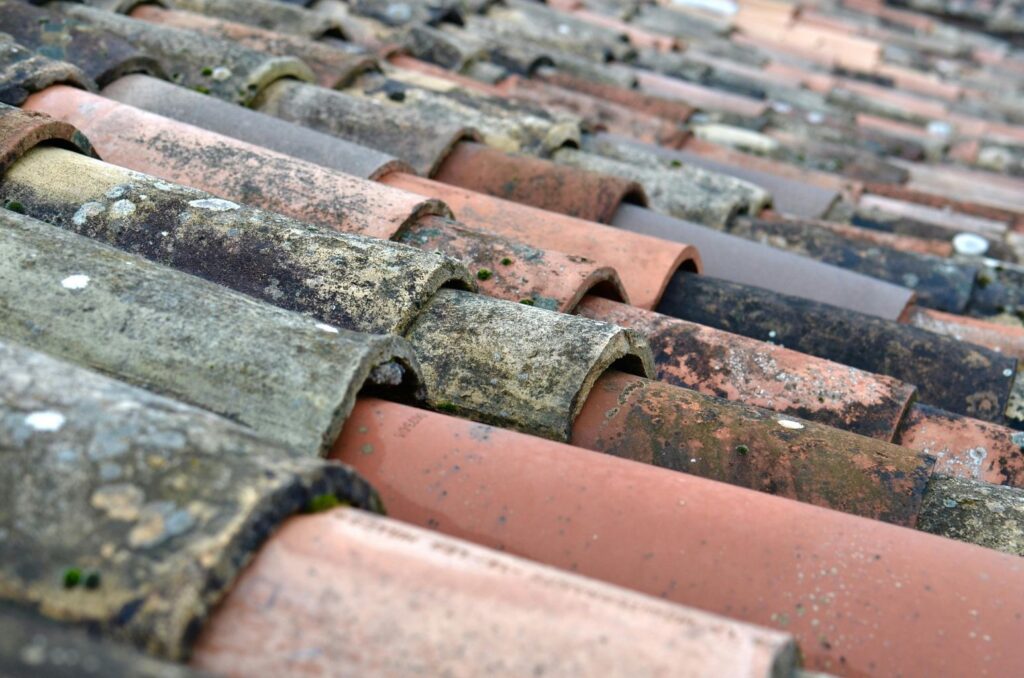Roofing expenses can accumulate rapidly, but there are numerous economical designs that help you save money. This article will look at various roofing options that are cost-effective yet offer solid protection and aesthetics. With different material choices and thoughtful designs, you can discover a roof that suits your needs without straining your budget. Here are some budget-friendly roofing ideas that are practical for both your finances and your home.
Understanding Budget-friendly Roofing Designs
Homeowners should consider factors like roof design, roof pitch, and local building codes when selecting budget-friendly roofing options. Popular choices include gable roofs, hipped roofs, and flat roofs that optimize surface area. The choice of roofing material has a significant impact on overall costs. Asphalt shingles and metal roofing are often more affordable than wood shingles, while dimensional asphalt shingles offer durability at reasonable material prices.
Installation costs can also vary; hiring a roofing company often affects labor expenses significantly. Efficient roof designs enhance energy efficiency and ventilation, which can lower heating and cooling bills, leading to long-term savings. Roofing materials like metal and asphalt shingles typically come with warranties, including material and workmanship warranties, adding value to the investment. A cape cod style or a shed roof can also aid in effective insulation, minimizing future maintenance.
Considering material price fluctuations, homeowners can choose the right materials for their roofing project to ensure performance while staying within budget.
The Importance of Affordable Roof Options
Affordable roofing options assist homeowners in managing maintenance budgets and long-term financial planning by minimizing both material and labor costs.
However, selecting the least expensive options may result in issues, including poor durability and insufficient warranties covering both materials and workmanship. Homeowners should investigate the long-term benefits of roofing investments compared to initial costs. Recognizing the influence of building material inflation and surface area on additional costs, like gutters or porches, is important when balancing affordability with quality. Making an informed choice in roofing materials can lead to a safe, energy-efficient home while meeting local building standards.
Choosing the Right Roofing Materials
Asphalt Shingles
Asphalt shingles are favored for roof design because of their durability and cost-effectiveness. They withstand tough weather conditions and offer various material choices, including dimensional asphalt shingles that enhance visual appeal. When looking at expenses, asphalt shingles typically have lower material and installation costs compared to metal roofing or wood shingles, making them a practical roofing option.
Homeowners should consider local building regulations and their roof pitch when choosing shingles. Different roof styles, such as gabled or hipped roofs, may need specific asphalt shingles, influencing material and labor costs. Warranties are another important consideration, as they provide reassurance to homeowners. Adequate ventilation and insulation can improve energy efficiency, resulting in reduced utility expenses. When planning a roofing project, consulting with an architect or a local roofing contractor is advisable to meet building regulations.
Additionally, the roof’s surface area and features, like a flat roof or porch, can affect material and labor costs.
Metal Roofing
Metal roofing offers several benefits compared to other materials. Its durability allows it to endure harsh weather, which decreases the frequency of repairs. While the upfront cost may be higher than asphalt or flat roofs, its long-term savings are significant; it often lasts longer, reducing labor and material expenses over time. Homeowners should consider their roof design and local building regulations when choosing styles and finishes.
Options like gabled and hipped roofs provide varied elevations and surface areas, affecting installation costs. It’s also important to think about insulation, ventilation, and energy efficiency. A roofing company or architect can assist in finding budget-friendly solutions while ensuring proper material and workmanship warranties. Opting for metal roofing can enhance a home’s value. Adjusting finishes to complement a porch or other architectural elements can improve overall aesthetics without excessive spending.
Tile Roofing
Tile roofing offers durability and energy efficiency, making it a solid choice for a budget-friendly roof. Unlike asphalt shingles, which typically need replacement every 15-30 years, tile roofs can last over 50 years, reducing long-term material costs. Roofing companies must consider roof pitch and elevation for adequate support and ventilation.
Maintenance for tile roofs includes regular inspections for cracks and ensuring gutters are clear to prevent water accumulation. Investing in a roof design with good insulation can enhance energy efficiency. This type of roof can be applied to various structures, including gable roofs, hip roofs, and shed roofs.
Adhering to local building codes during the roofing project is also important for safety and stability.
Synthetic Roofing Materials
Synthetic roofing materials offer affordable choices compared to traditional options such as wood shingles or metal roofing. They often have lower material costs, helping to bring down the overall budget of a roofing project. Many synthetic options, like dimensional asphalt shingles, are designed for durability and can withstand varying weather conditions, reducing future labor expenses for repairs.
Additionally, synthetic roofing can improve energy efficiency and sustainability. Certain types are made to enhance insulation and ventilation, resulting in reduced energy bills. Homeowners should consider factors such as roof design—which may include gabled, hipped, or shed roofs—as well as local building codes and availability of materials when selecting roofing. Budget constraints are also important; choosing materials that require less upkeep can be a wise investment over time. Furthermore, the roof pitch and surface area can affect installation costs, so consulting with an architect or roofing company to identify the most cost-effective roofing solution is recommended.
Opting for Efficient Roof Designs
Homeowners should consider energy efficiency, material costs, and labor expenses when selecting roof designs. For instance, a gable roof increases ventilation and can enhance insulation, leading to lower energy bills.
Additionally, styles like Cape Cod or a shed roof impact the cost of materials and labor. It’s advisable to consult local building codes and choose materials that meet regulations while being budget-friendly. A roofing company or architect can assist in navigating these decisions, ensuring that the chosen roofing style, whether a hip roof or flat roof, adheres to regulations. Homeowners should also factor in the roof’s surface area and drainage solutions like gutters to prevent future repair costs.
With building material price increases, exploring affordable roofing options is smart.
Factors Influencing Roof Design and Costs
Roof Pitch
Selecting the right roof pitch can result in reduced costs and improved efficiency. A steeper pitch facilitates better water drainage, helping to avoid leaks and lowering maintenance expenses over time. Different roofing materials perform variably depending on the pitch.
The pitch also influences installation methods and labor costs, as different tools or techniques may be required based on the elevation. Homeowners should consider future repairs since roofs with steep pitches might necessitate more safety equipment for maintenance, affecting labor costs. Durability is another consideration; materials with longer warranties typically accommodate various pitches.
Finally, being aware of local building regulations and how roof pitch relates to ventilation can impact choices on insulation and energy efficiency. This ensures a cost-effective roof that aligns with both needs and regulations while enhancing the home’s appeal.
Installation Process
To prepare for installing an affordable roof, measuring the roof’s surface area and checking local building codes is important. Selecting the appropriate roofing material can influence durability and energy efficiency. Hiring a trustworthy roofing company and consulting with an architect about the roof design—whether it’s a gable roof, hip roof, or shed roof—ensures efficient and safe installation.
Establishing a clear timeline and budget helps manage labor expenses and material costs, which can be affected by fluctuations in building material prices. Typical challenges like bad weather or unexpected structural issues can be addressed by planning for delays and incorporating ventilation solutions into the design.
Appropriate materials, including insulation and gutters, must meet code requirements to contribute to the long-term success of the roofing project.
Navigating Local Building Codes
Homeowners should verify local building codes before beginning a roofing project. Each region has specific rules that may influence the roof pitch, the type of materials used, and even the design, such as whether a gable or flat roof is permitted. To ensure compliance, they should check with their local building department or visit its website to gather information about necessary permits and applicable regulations.
This helps them understand which roofing materials are allowed. Consulting with an architect or a reputable roofing company can also provide expert advice.
Benefits of Lower Pitch Roofs
Lower-pitch roofs can enhance energy efficiency by improving insulation and ventilation. This helps maintain comfortable indoor temperatures, potentially reducing energy expenses. Installation costs tend to be lower for these roofs since they involve simpler designs like gabled or hipped roofs, which also enhance durability over time. Maintenance is easier due to the gentle slope, simplifying gutter cleaning and repairs.
From an aesthetic viewpoint, low-pitched roofs such as flat, shed, or cape cod designs can be visually appealing and cost-effective. These styles can coordinate well with porches and extensions while adhering to local building regulations. Material choices like dimensional asphalt, metal roofing, or wood shingles offer a refined look without significant installation costs. With careful selection of roofing materials, homeowners can invest wisely, benefiting from material and workmanship warranties that extend the lifespan of their roofing project.
Conclusion
Budget-friendly roofing designs can lower expenses while keeping quality and aesthetic appeal intact. Using cost-effective materials, like asphalt shingles or metal roofing, can reduce initial costs and ongoing maintenance.
Incorporating energy-efficient designs can lead to savings on utility bills. Features such as reflective roofing materials or proper insulation help limit heat absorption, lowering air conditioning costs.
Moreover, choosing simpler roof shapes, like gable or flat roofs, can simplify construction and reduce labor costs. Regular maintenance and inspections can also extend the lifespan of a roof, avoiding expensive repairs in the future.
By combining thoughtful design choices with sustainable practices, homeowners can achieve an appealing and durable roof without overspending.
Want a stylish roof without the high price tag? Houstons Roofing co offers budget-friendly roofing designs to save you money while enhancing your home’s look. Contact us today to explore affordable options that suit your style and budget!

